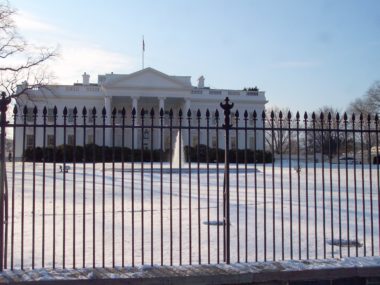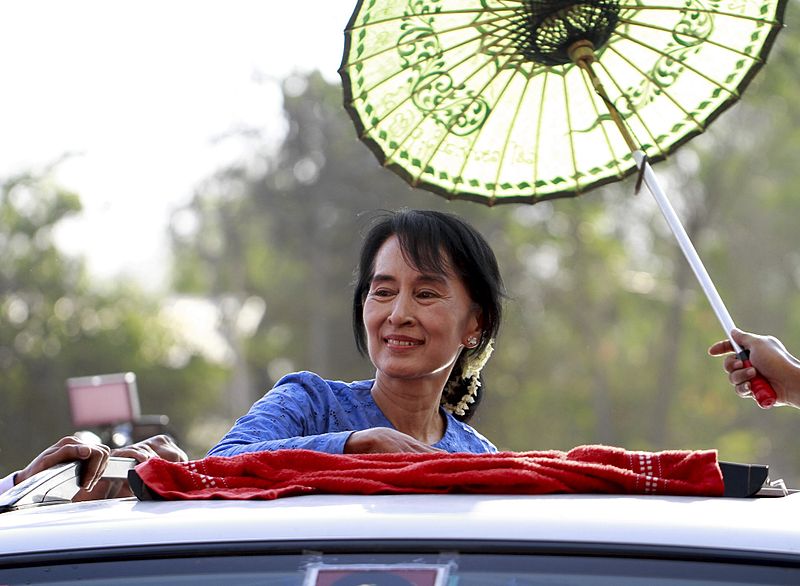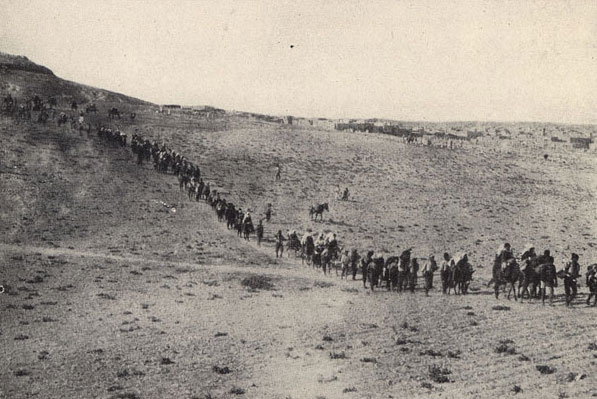Guest post by Matthew Isaacs
In a state marred by conflict, a wave of religious violence threatens the sovereignty of the nation, international actors talk of intervention, and commentators speak of a move towards authoritarianism or a slide back into war. What optimistic politicians once portrayed as fertile ground for Western-style democracy, realists now decry as a land of perpetual strife among extremist religious groups.
I’m talking of course about Sri Lanka.

As the West focuses on the expansion of Islamic militancy in Iraq, the tide of anti-Muslim sentiment in Sri Lanka has reached unprecedented proportions. Last week a mob of Buddhists ravaged a neighborhood in the southern town of Aluthgama, killing four Muslims and injuring dozens more. All signs point to the Buddhist Power Force (Bodu Bala Sena, BBS) as responsible for the incident. Though increasing in scale, the trend of violence against Sri Lanka’s religious minorities – both Muslims and Christians – has been on the rise for over a decade.
On January 21st of last year, Sri Lanka’s Minister of Religious Affairs, K. D. S. Gunawardena, gave a speech in which he proudly declared an end to decades of communal violence. While Gunawardena was speaking in Colombo, a group of Buddhist monks were parading the streets of Kuliyapitiya in northwestern Sri Lanka calling for the deportation of all Muslims. Commentators once optimistic about the future of post-civil war Sri Lanka now ask if Muslim identity is a liability in the island state.
To outsider observers, the Buddhist majority’s sudden targeting of religious minorities may come as quite a shock. For the bulk of its post-independence history, Sri Lanka has been dominated by the conflict between the Sinhalese and the Tamils. Though the Sinhalese (74% of the population) are mostly Buddhist and the Tamils (12%) are generally Hindu, the decades long civil war ending in 2009 was largely secular in nature. Conflict began over the question of Sri Lanka’s official language and escalated to issues of territorial control. It was a conflict between religions but it was rarely a conflict about religion.
Since the mid 2000s, however, Sri Lanka has seen hundreds of violent incidents between Buddhists and Christians or Muslims. Generally, one out of three such incidents involves Buddhist monks in some capacity. Moreover, the US State Department cites several incidents in which victims have been threatened for reporting religious violence to the police, suggesting that many more incidents may go unreported.
To find the underlying causes of this violence, one need only look at the changing position of the Buddhist clergy in Sri Lankan society. Over the last several decades, Sri Lanka’s traditional Buddhist leadership, composed of nearly 30,000 monks and known collectively as the sangha, has become more fractured and more political. For centuries, the sangha has been divided into a number of sects and regulated by a high council. The high council was traditionally responsible for dispensing material support from the state and regulating the behavior of the monks in each sect. This hierarchy ensured a degree of doctrinal consistency across the sects by granting senior monks the authority to discipline their subordinates.
This system changed dramatically in the mid-20th century, when the Sri Lankan state withdrew its material support to the sangha. The loss of support made the sangha dependent on lay worshippers while also undermining the power of the high council. Without enforcement from above, the religious hierarchy came to lack authority. As a result, individual monks were granted the autonomy to deviate from their community.
The economist Laurence Iannaccone of Santa Clara University has argued that more radical religious organizations tend to extract the most resources from their adherents. Doctrinally strict religions tend to reduce the number of “on-the-fence” adherents while encouraging ardent believers to become as involved as they can.
In Sri Lanka, the dismantling of the Buddhist hierarchy coupled with a shortage of material resources encouraged many monks to embrace radicalism. Variation in this behavior can even been seen at the local level. Monks from historically wealthy temples tend to support a more traditional interpretation of Buddhism, while monks from historically poor temples tend to embrace a more radical message.
The effect of this resource competition has been a general increase in both the radicalism and political activism advocated by monks. Especially since the 1970s, a growing number of monks have endorsed radical ethnic politics as a means of self-promotion. It was during this period that a series of influential monks began to preach against religious minorities.
Most prominent in this regard are the National Heritage Party (Jathika Hela Urumaya, JHU) and the BBS, both organized composed entirely of monks. Established in 2004 and 2012, respectively, the JHU operates as a traditional political party while the BBS has avoided institutional politics in favor of staging large-scale protests. Though the BBS has taken a more active role in anti-minority protest events, the JHU has introduced legislation banning religious conversion and has called for the arming of Sinhalese Buddhist civilians. Just this week, the General Secretary of the JHU, Patali Champika Ranawaka, responded to criticism of the violence in Aluthgama by accusing the United States of “strengthening the global Taliban movement” by permitting Muslim extremism in Sri Lanka.
Organizations like the JHU and the BBS are internally divided and composed of monks seeking individual notoriety by appealing to the ethnic insecurities of their base. These organizations are evidence of the extent to which the Buddhist religious economy has become a free market dominated by entrepreneurs whose fortunes are limited only by their radicalism and rhetorical skills. Faced with a resource deficit and the autonomy to preach as they please, Sri Lanka’s Buddhist clergy have both the means and the motive to promote radical anti-minority rhetoric. The island’s political environment will continue to reward such rhetoric as long as competition among Buddhist monks is encouraged by a “free market” approach to religious leadership. Alternatively, should political actors move to undo the fragmentation of the sangha, the competitive incentives so important for encouraging anti-minority violence could be curtailed.
Matthew Isaacs is a PhD candidate in Politics at Brandeis University. His dissertation examines the relationship between formal religious organizations and the political representation of ethnic identity.







13 comments
This account seems to indicate that no ideology can overcome human tendencies toward tribalism, war, and oppression. However, in many countries, the sort of politics described here would provoke important countervailing forces which seem to be absent in Sri Lanka. I wonder why that is.
Sinhala Buddhist Bigotry Root Cause Of Strife In Sri Lanka, 16 March 2014, https://www.colombotelegraph.com/index.php/sinhala-buddhist-bigotry-root-cause-of-strife-in-sri-lanka/
THE SANGHA AND ITS RELATION TO THE PEACE PROCESS IN SRI LANKA, A Report for the Norwegian Ministry of Foreign Affairs, Iselin Frydenlund, International Peace Research Institute, Oslo (PRIO) (2005): ‘’Lack of political consensus in the south and opposition to the various peace processes by nationalist and Buddhist pressure groups have time and again made peacebuilding difficult in Sri Lanka. …. One possible strategy for supporting pro-peace actors might be to encourage support from countries like Thailand – which, like Sri Lanka, is also a Theravada Buddhist country ‘’
Chandra R. de Silva implies that Buddhist monastic opposition to a non-unitary state has contributed to the conflict. He appreciates the reasons for this, but pleads for a system of monastic education that would expose monks to other religions and cultures. …. I have no hesitation in recommending this volume as a serious contribution to the understanding of one of the most complex and intractable conflicts in the world’’, Dr Elizabeth Harris(Liverpool Hope University), Review(2007) of Buddhism, Conflict and Violence in Modern Sri Lanka(2006) – http://www.equinoxjournals.com/ROSA/article/view/3519/2212
Sinhalese Buddhist Nationalist Ideology: Implications for Politics and Conflict resolution in Sri Lanka, East-West Centre Policy Studies 40, Neil De Votta(2007): ‘’International human rights monitors must be stationed in Sri Lanka to ensure minorities are protected’’
http://jbe.gold.ac.uk/10/dhammavihari-sri-lanka-conf.html
Conference on Buddhism and Conflict in Sri Lanka 2001, Recording, Translating and Interpreting Sri Lankan Chronicle Data By Ven. Prof. Dhammavihari:
‘’…This was the beginning of nationalism among the Sinhalese.….. A kind of religio-nationalism, which almost amounted to fanaticism, roused the whole Sinhalese people…
A non-Buddhist was not regarded as a human being. …
What a catastrophic misinterpretation based on misinformation. It is our conviction that these references have both to be dumped in the garbage bin in the face of historical realities. In our search for a real solution to the problem, the story of the Ethnic Conflict in Sri Lanka must be re-studied with sanity and sobriety. International interference or pressure from anywhere is by no means the answer. …’’
‘’In December 2002, the Pool (referring to the UK govt Global Conflict Prevention Pool) brought five senior members of the Sri Lankan Buddhist clergy to London, Belfast and Edinburgh to study devolved administrations. They met a wide range of politicians, senior officials, religious groups and community leaders. The delegates found the visit extremely valuable, and took back positive messages about the devolution process’’ – http://www.cic.nyu.edu/peacekeeping/conflict/docs/global-conflict-prevention-pool.pdf
Sinhalese Buddhist Nationalist Ideology: Implications for Politics and Conflict resolution in Sri Lanka, an East-West Centre Policy Study by Neil De Votta argues that political Buddhism and Sinhalese nationalism have contributed to a nationalist ideology that has been used to expand and perpetuate Sinhala Buddhist supremacy within a initary Sri Lankan state; create laws, rules and structures that institutionalise such supremacy and attack those who disagree with this agenda as enemies of the state.The nationalist ideology is influenced by Sinhala Buddhist mythic-history that was deployed by monks and politicians in the late nineteeth centuries to assert that Sri Lanka is the designated sanctuary for Theravada Buddhism belonging to the Sinhala Buddhist and Tamils live there only due to Sinhala Buddhist sufference
Neil Votta further highlights the intransigence of the Sri Lankan government thus ” The present government of President Mahinda Rajapakse is the first to fully embrace the Sinhalese Buddhist Nationalist ideology, suggesting that a political solution to Sri Lanka ethnic conflict is unlikely. Meaningful devolution of power ,whereby Tamils could coalese with their ethnic counterparts amidst equally and self respect is not in the offing” ( http://www.eastwest.org/publications/search-for- publications/browse-alphabetic-list-of-titles/?class_call=view&pub_ID=2314&mode=view)
CEYLON : A DIVIDED NATION, B H Farmer(1963):”…… The truth, unpalatable though it may be to some, is simply that nobody unacceptable to the present second wave of resurgent, Sinhalese Buddhist nationalism has any chance of constitutional power in contemporary Ceylon.
What you see in the topic is just the surface of much more deeper and complicated issue. The average outsider will never understand the true factor of the monks involve in politics in Sri Lanka. Even if you do it is only a scratch of the surface of the deep ocean.
🙂 Happy Holidays !!